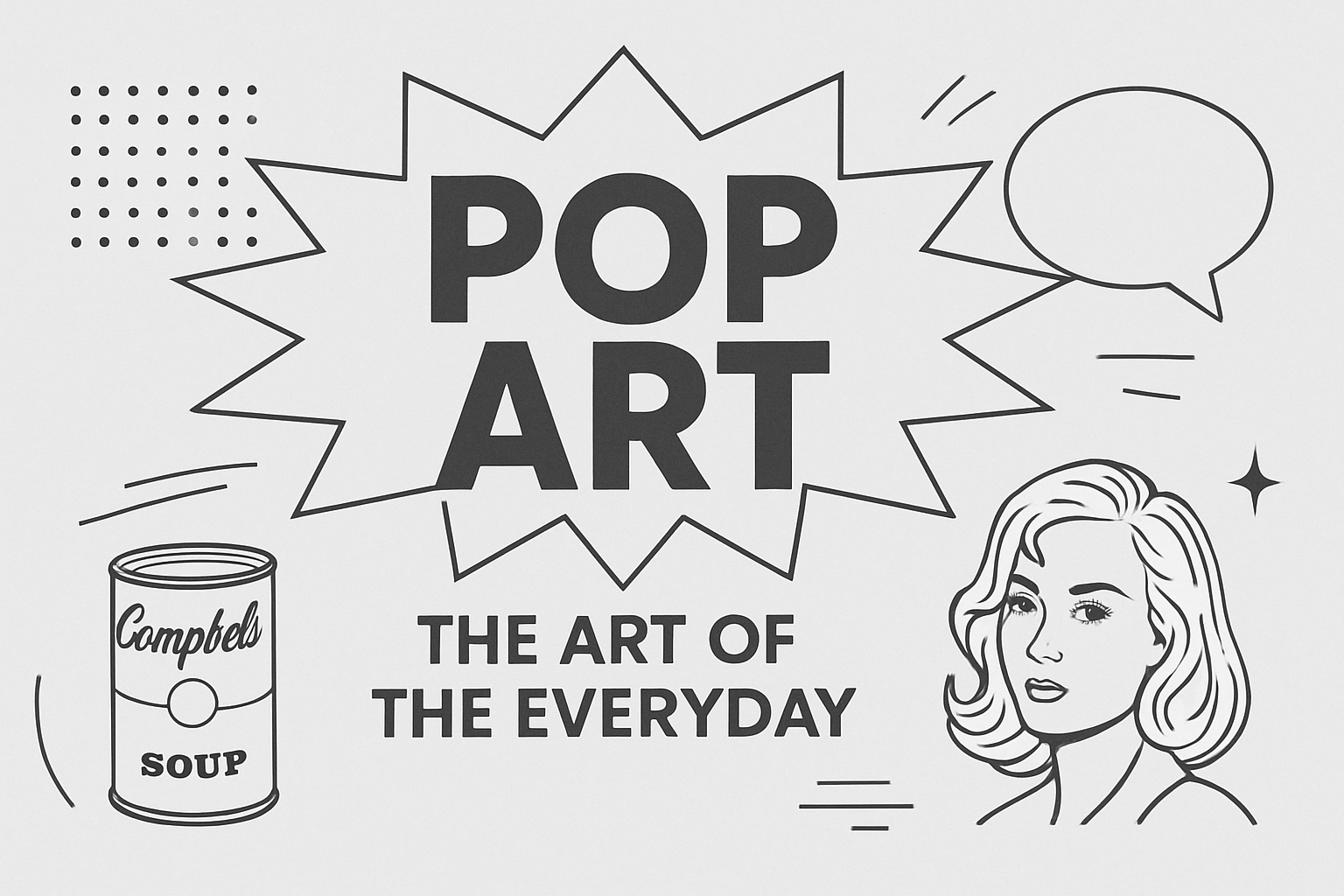Emerging in the second half of the 20th century, Pop Art (short for “popular art”) is one of the most well-known and attention-grabbing movements in the history of modern art. Its birth is closely linked to the rise of consumer society and mass culture, and its visual language continues to influence graphic design, fashion, advertising, and many branches of contemporary art to this day.
When did Pop Art emerge?

Pop Art first appeared in Britain in the mid-1950s, and soon after blossomed in the United States as well. While British artists often approached it from a more theoretical and critical perspective, American Pop Art artists boldly drew from the world of advertising, comic books, and Hollywood celebrities.
The movement reached its peak in the 1960s, but its impact is still strongly felt in visual culture today.
The Characteristic Style of Pop Art
Pop Art broke radically with the emotional, subjective expression of abstract expressionism. Instead, it took its themes from everyday life and popular culture. It was a kind of artistic response to the growing dominance of mass media and consumer goods.
Key Characteristics:
- Subjects: soup cans, comic book heroes, celebrity portraits, billboards, logos, slogans, money, cars, and everyday objects.
- Techniques: screen printing, collage, montage, photorealistic painting, and image enlargement.
- Stylistic features: bold outlines, stylized figures, repetitive motifs, minimalist and often industrial-like execution.
- Intent: often ironic or satirical, critiquing mass culture and consumerism—though sometimes simply playful and decorative.
Color in Pop Art
One of the most striking aspects of Pop Art is its use of bold, vibrant colors. Artists often used primary colors (red, yellow, blue), high-contrast combinations, and large, flat color fields to create visually powerful works that immediately grab the viewer’s attention.
These colors served not only aesthetic purposes but also heightened the parodic, exaggerated impact of advertisements and pop cultural elements.
Prominent Pop Art Artists
- Andy Warhol: Perhaps the most famous name in Pop Art history. His most iconic works include the Campbell’s Soup Cans and the repeated portraits of Marilyn Monroe.
- Roy Lichtenstein: Known for his comic book-style paintings, such as Whaam! and Drowning Girl.
- Richard Hamilton: A British artist whose collage Just what is it that makes today’s homes so different, so appealing? is often considered the first true Pop Art piece.
- Robert Rauschenberg and Jasper Johns: These American artists created a bridge between abstract expressionism and Pop Art. Their early works paved the way for the movement’s explosion in the 1960s.
The Impact and Legacy of Pop Art
Pop Art wasn’t just a major milestone in art history—it also served as a mirror to society. It revealed how art became part of mass culture, and how the visual language of consumerism was reflected in artistic creation.
In the digital age, Pop Art’s legacy lives on—in meme culture, advertising, street art, and fashion. Many artists still draw inspiration from this style today—modernizing and reinterpreting it while retaining its playful and critical spirit.
